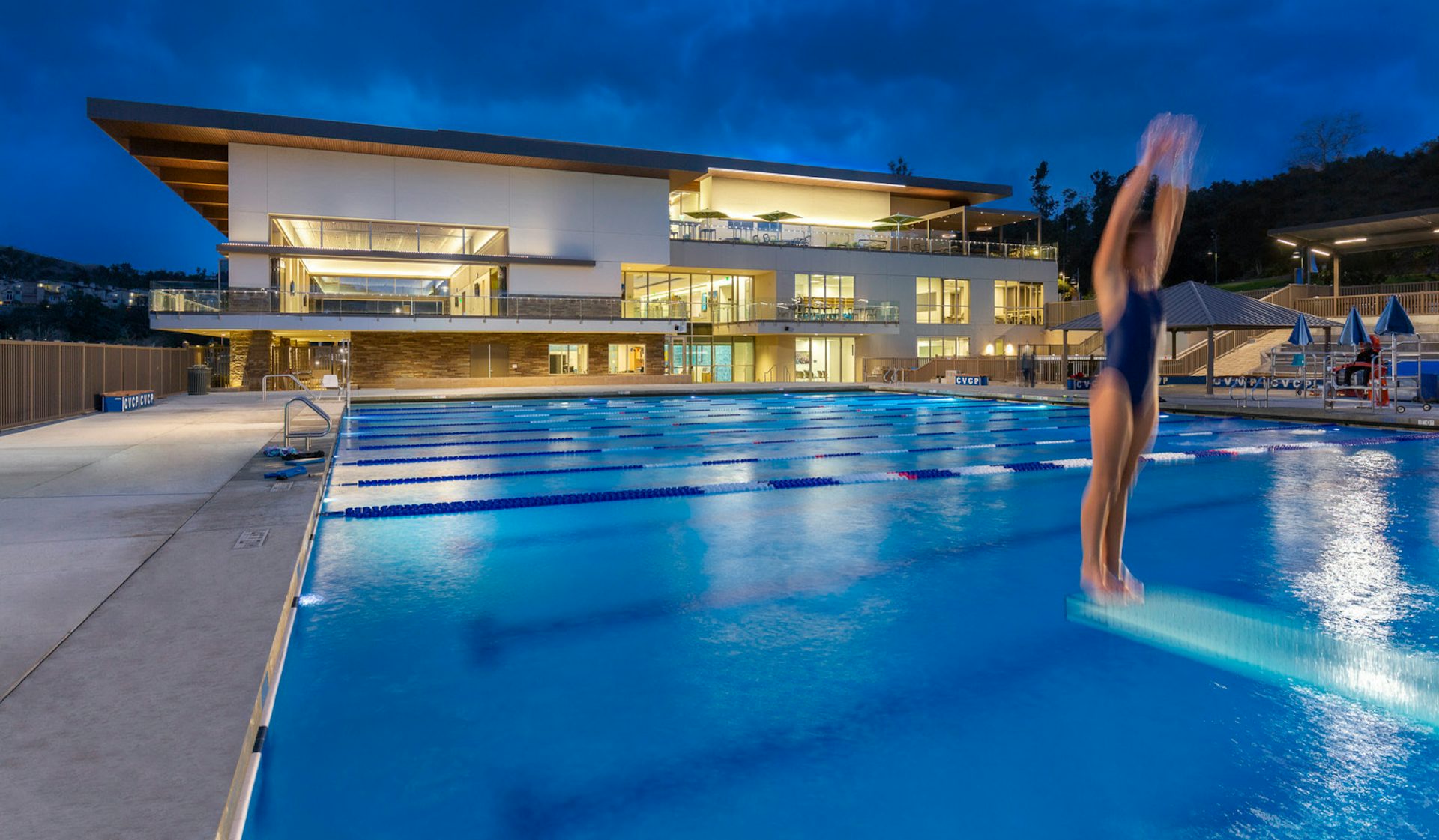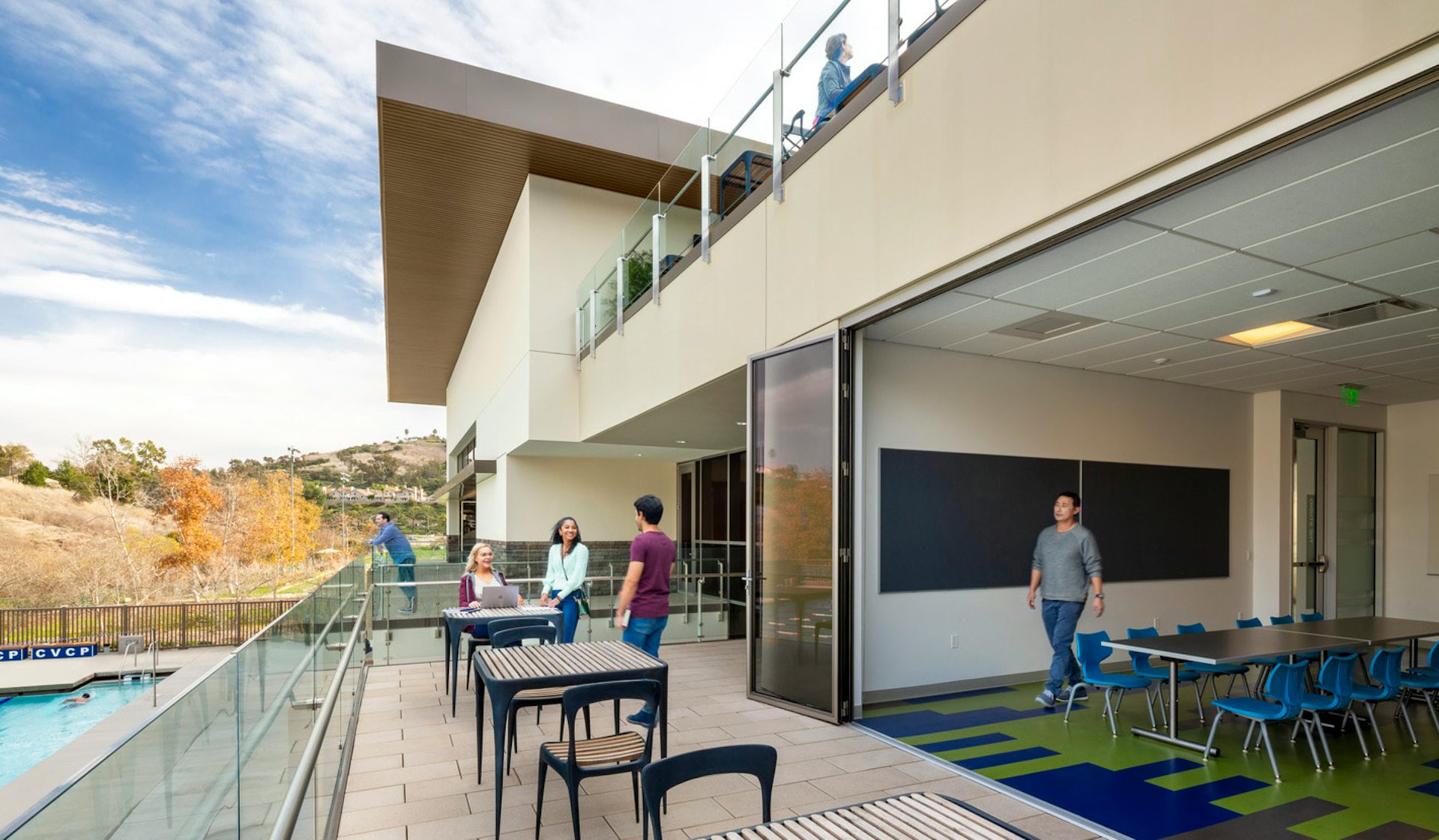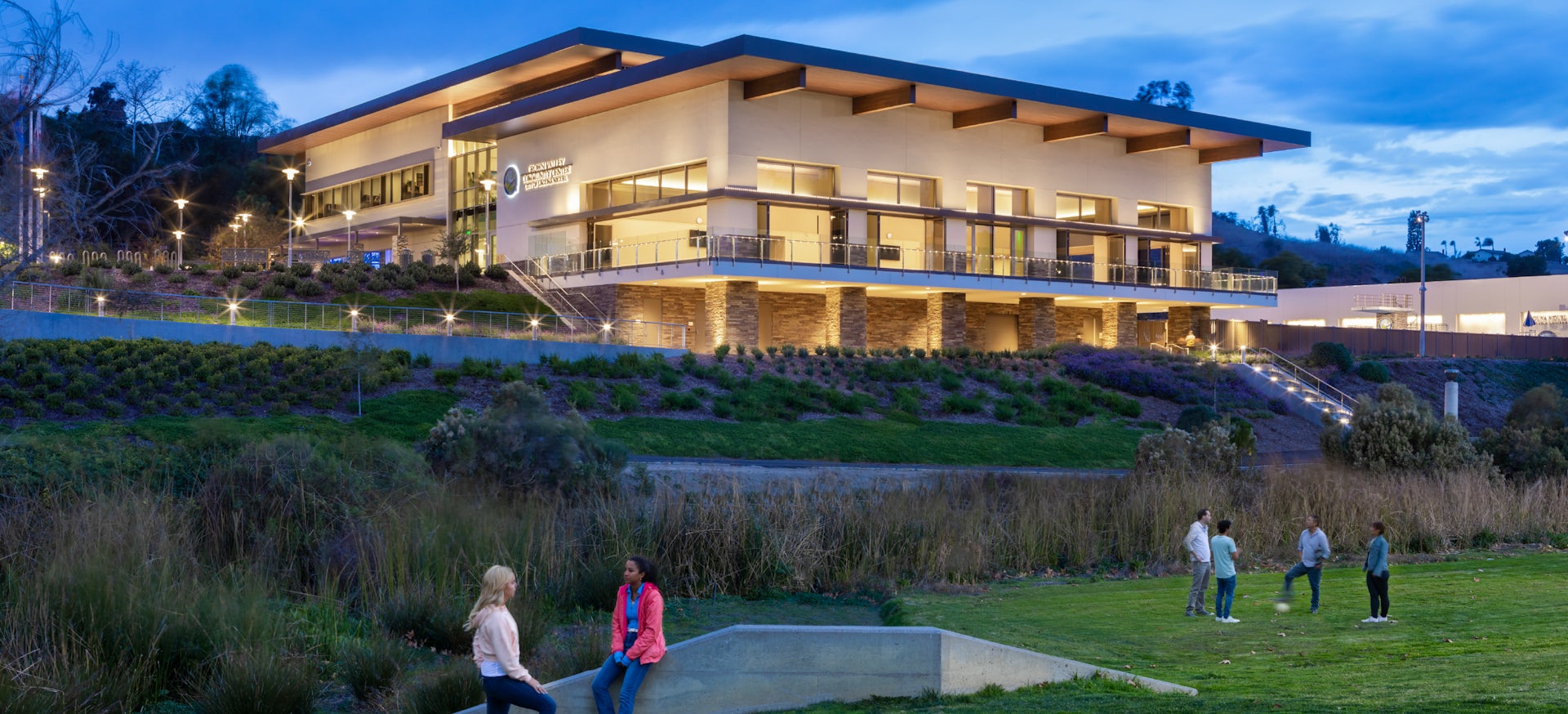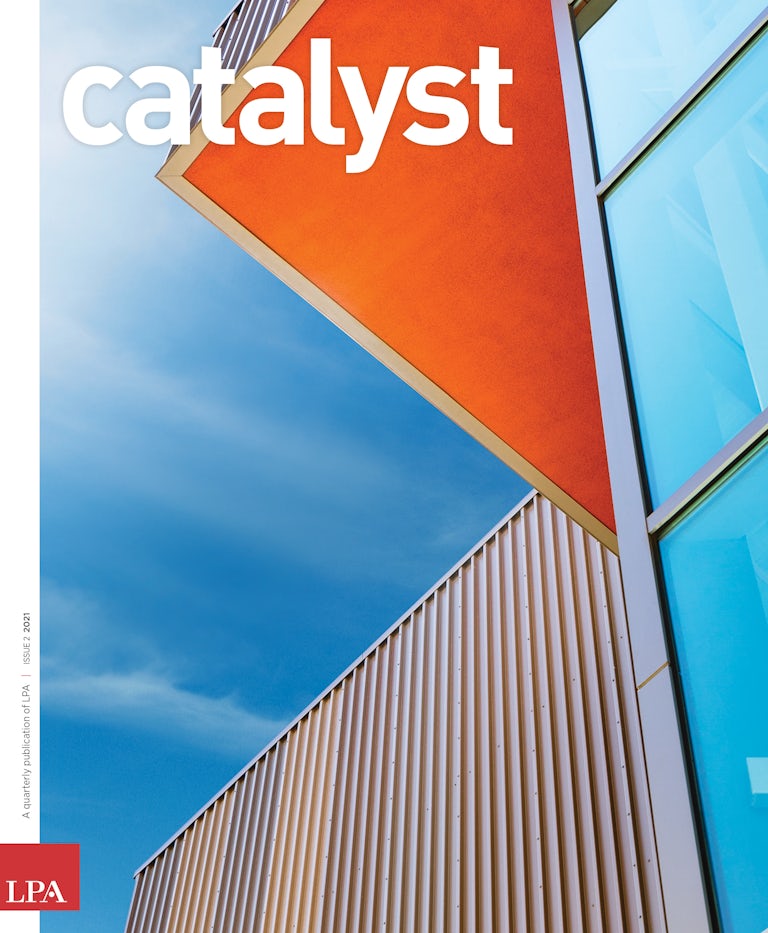Designed with extensive public input, the new Crown Valley Community Center provides recreation, arts and cultural programs for the city of Laguna Niguel, while knitting together several amenities in an existing park.
“Many community centers are underused,” says LPA Director of Civic + Cultural Jeremy Hart. “The goal from the start of this project was to make sure the facility created real value for all elements of the community.”
The city and the designers approached the Crown Valley project as an opportunity to unite the existing park’s different elements. As the final phase of a master plan, the community center would address many of the city’s long-range goals and link the existing facilities. The park already had a wealth of recreational and cultural amenities — sports fields, walking trails, a YMCA, botanical gardens, an amphitheater and a popular community pool.
The Community-Designed Community Center
An integrated team worked with the community to create a flexible, open facility that enhances existing programs and meets the city’s larger goals.

“The goal was to bring together all these different parts and pieces of the park, tying everything together into one cohesive experience for the city,” Hart says.
To realize the center’s full potential, the city needed a clear idea of what the public wanted — and what residents felt was missing from the current facilities. LPA had already worked with the community in the design of a new City Hall several years earlier, and that history provided a foundation of trust.

The design team looked for different ways to engage the community, recognizing that not everyone communicates in the same way. Early in the process, the city included a survey with water bills and on its website, asking residents about the activities the new community center should accommodate. In response to the initial feedback, designers presented visual renderings of potential spaces at two public visioning sessions. That helped to produce a wish list that would inform every subsequent step of the process.
But the project faced myriad challenges, including relevant departments’ varied priorities and an unwieldly site with a steep grade. The topography made it difficult to incorporate parking, a public plaza and the main entrance on the same level. The steep slope also complicated the connections to existing community pools.

The new 30,000-square-foot facility is five times bigger than the building it replaced and creates a new hub for the park’s attractions. LPA engineers devised a unique structural flat-slab concrete deck that provided additional clear height and allowed the building to take full advantage of the sweeping views of nearby Saddleback Mountain and the park’s botanical reserve. A cantilevered, glass-covered space extends from a 4,000-square-foot ballroom, immersing those inside in a canopy of eucalyptus trees. Visitors can see the pool from the two-story glass lobby, a visual invitation to the popular amenity and an important aspect for city recreation managers.
“One of the really amazing things about this project is its ability to tie the inside and the outside together,” Hart says.
LPA landscape architects designed a landscaped walkway that flows over the hillside to the sports fields. The walking path, graded according to Americans With Disabilities Act standards, connects the center with the park’s other elements.

“My favorite part of the design is the walkway, which was part of our effort to deal with the grade change on the site,” says LPA landscape architect Danielle Cleveland. “It actually is a really amazing, curved walkway that meanders through the landscape to get you from the community center down to the fields.”
To address the need for a safe traffic zone near the building entrance — a top priority for parents — a handle-shaped drop-off/pick-up area was designed, allowing half a dozen vehicles to wait in line without blocking traffic on the entrance road. A large, well-lit area directly in front of the main entrance provides ample room for children to wait for rides. The space also serves as a pre-function area for the amphitheater, a plaza for a weekend farmers’ market and a setting for the city’s annual Christmas tree lighting ceremony.

The community’s influence can be found throughout the facility. Flexible spaces of varying sizes were designed for after-school programs and adult classes. The public can rent some of these spaces for meetings, parties and family celebrations — a specific request from residents that also created a revenue stream for the city. A banquet hall capable of seating 300 people features three sets of movable walls that can easily subdivide and reconfigure the spaces.

Details throughout reflect the specific interests of different groups. The dance room was redesigned as an “active movement room,” with flooring and space to support many different styles of dance and classes. LPA’s lighting team designed an adjustable LED lighting system that can vary the atmosphere to suit the activity. The room is also designed with mirrored walls, allowing parents to quietly observe classes without creating a distraction.
For parents who wait at the center while kids take swim classes or attend other programs, a roof deck offers a comfortable place to relax. Another key priority was addressed by creating new locker rooms with individual shower stalls, all composed of high-quality materials; they replaced the outdated, 1970s-era facilities in the original structure.
The center, which opened in 2020, not only unites the park’s different elements but also serves as a unique community center that responds to the site and satisfies the needs and desires of the Laguna Niguel community.
...
A Plan to Engage the Community
With so many stakeholders involved, designers developed a detailed community outreach plan to ensure all voices were actively involved in the design process. The engagement process was done in stages.
A survey was sent to all residents to get their feedback on the types of programs they would like to see in the community center. This survey was used to develop the program for the project.
In two public workshops — one in the community room at City Hall on a Saturday and one in the Senior Center on a weekday evening — LPA designers presented options for interior and exterior spaces. The qualitative aspects of the space were also defined and explained, such as safety, security, access, parking, natural daylight, views, technology, AV and other amenities within the spaces.
With the quantitative and qualitative aspects of the program defined, the building was designed in collaboration with the City Council Ad Hoc Committee and City Staff, with three distinct design aesthetics, all based upon the same floor plan layout. The council narrowed the choices to two preferred options.
The two preferred design options were taken to two separate community workshops, both held at the existing community center, again on a weeknight and a Saturday morning. The public was given an opportunity to comment and place notes on large story boards.
Feedback was presented to the City Council and the public was able to comment before the council voted on the preferred direction of the design.



